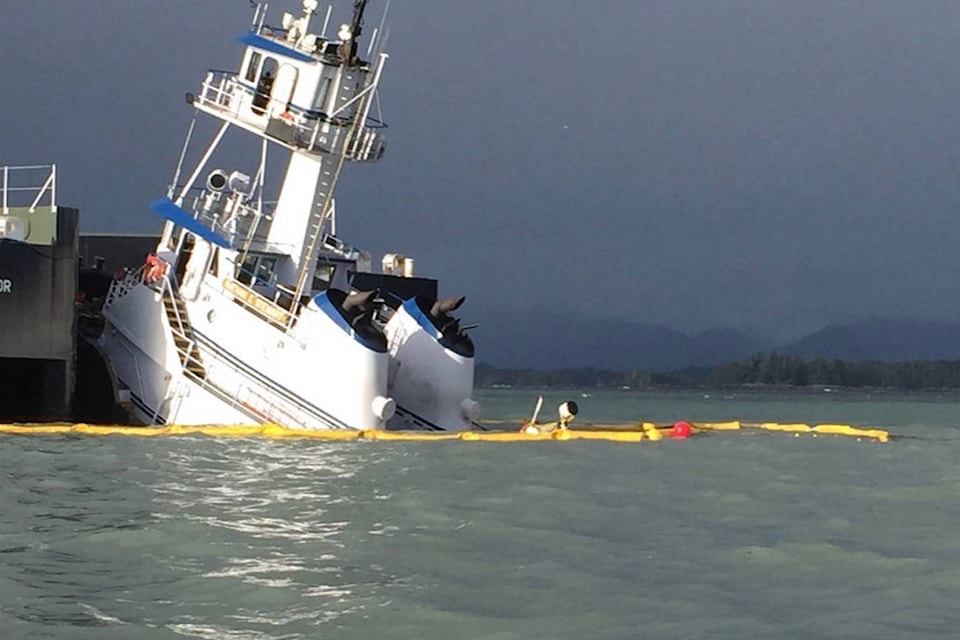The second mate falling asleep while on watch was the likely cause behind the Nathan E. Stewart sinking off B.C.’s north coast last year, according to the Transportation Safety Board.
In an incident brief released this week, the board said the second mate had fallen asleep shortly before the tug crashed on Oct. 13, 2016.
The Nathan E. Stewart ran aground on a reef in the Seaforth Channel near Bella Bella, spilling approximately 110,000 litres of diesel and another 2,000 litre of lubricants into the water and causing an estimated $12 million in damage to the tug and the barge it was towing.
READ: Renewed calls for tanker ban after large diesel spill near Bella Bella
According to the report, the Kirby Corporation-owned vessel ran aground just past 1 a.m. on Oct. 13, only slightly over two hours after the second mate had taken over steering the tug from the captain.
Typically, the second mate worked the midnight to 4 a.m. shift but had started an hour early at 11 p.m.
Based on the last steering instructions inputed, the second mate fell asleep sometime after 12:24 a.m.
“According to the captain, approximately an hour or an hour and a half after the grounding, the second mate admitted, “I fell asleep,” during a discussion with him about the accident,” the report reads.
The second mate later admitted this to investigators but said he felt he had had “adequate” rest in the days leading up to the accident, despite losing an hour of sleep that night.
READ: B.C. ‘cheated’ on spill response, Clark says
The report also pointed out that the crew was not following its own safety policy which required a second person on watch in the wheelhouse with the second mate.
“There is no evidence indicating that a second watchstander was ever present on the bridge with the second mate,” the report reads.
The vessel was equipped with a cross-track error alarm function, which would alert its operator if the tug’s GPS position deviated from its route. When triggered, the system would sound an alarm and display a secondary route from its new, current position, allowing the vessel to get back on track.
The second mate last adjusted the tug’s course at 12:24 a.m. At 12:53 a.m., he should have adjusted it again – but he didn’t, something that would have triggered an alarm had the cross-track alarm system been operation.
However, the second mate did not switch on the cross-track alarm the night of the accident and told investigators that it was “normal practice for the navigation team to not utilize that tool.”
Instead, sensing something amiss, a tankerman attempted to radio the second mate twice at about 1 a.m., before heading up to the wheelhouse to see what was going on.
He never made it and felt what he later described as “shuddering.”
When he radioed the second mate for the third time, he was told that the tug had grounded at 1:08 a.m. after having continued on autopilot since the second mate last changed its course at 12:24 a.m.
According to the Heiltsuk Nation, which fishes in the waters nearby, the Nathan E. Stewart sank by the next morning. It was brought up and out of the water in mid-November 2016.
Last month, the Heiltsuk Nation said it would be taking Kirby to court because it has been denied answers about what happened during the spill, which “continues to be a catastrophic injury to our food sources, culture, and economy.”
Like us on Facebook and follow us on Twitter.
